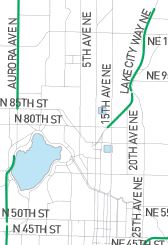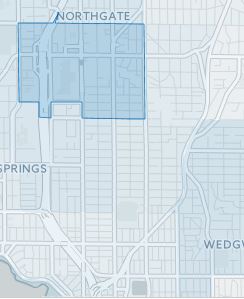Our news partner The Seattle Times posted two stories this week that should interest many, perhaps most, of us.
Today’s piece is on a pilot program in Seattle to reduce speeds on some arterials streets from 35 mph to 20 mph. As for major streets,the plan calls for: “Review arterial speed limits and reduce to 30 mph or lower.”
Seattle will try limits of 20 mph for streets in five to 10 residential areas this year — including a swath of Lake City around the library, and a piece of Seward Park Avenue South at Rainier Beach High School.
Cities may lower speeds under a bill sponsored by Rep. Cindy Ryu, D-Shoreline, that passed the Legislature in 2013.
This has been frequently discussed in Maple Leaf, but until the new legislation passed there was no legal authority for local officials to make the change. The argument is that many more pedestrians (or bicyclists) can survive being hit by a car at 20 mph than at 35-40 mph.
None of Maple Leaf’s streets are directly involved in this year’s change, but proposed future changes include part of Lake City Way Northeast in our neighborhood (green lines).
The plan, dubbed Vision Zero, involves a number of other changes:
The city’s broad traffic-safety effort will include slower speeds, more school-zone cameras, fewer right turns on red and targeted enforcement. The name, “Vision Zero,” refers to a statewide effort by law enforcement, government, urbanist and safety groups to eliminate traffic deaths and serious injuries.
The Times story is here. The full Vision Zero plan (pdf) is here.
The Times’ “FYI Guy” earlier this week posted an interactive look at commute times throughout the city under the headline: “What times does your neighborhood leave for work?”
Locally, the FYI Guy says:
Very few of us leave for work in the late morning or afternoon, but it’s not uncommon in areas with a large concentration of people who do shift work, such as food service or retail jobs. The University District has a high percentage, as do Northgate, downtown Seattle and many areas in south King County.
The story and map are here. Below is the 10 a.m. commute from Northgate.



No one is going to drive 20mph except the people that already do, it’s a waste money and time to change all the signs. I’d rather the money be spent on sidewalks on our streets that don’t have them.
98th is already 20mph and people already go about 30mph. The Maple Leaf section has speed mitigation (speed humps and chicanes) but the Meadowbrook side has neither. Posting 20mph won’t make people go slower unless there is some other mitigation.
Find another way to get around besides driving.
The Seattle Department of Transportation is really trying to create more traffic congestion. The speed limit is the “maximum safe speed” and people already are required to go slower when conditions require it.
If they lower the speed limit to zero, nobody will ever be hurt. Think of the revenue for ticketing speeders. I can’t see any problems with this.
@Sue: From what I can tell, nobody is seriously suggesting 20 mph arterials. It’s 20 mph for certain non-arterials.
MLL: Thanks, Brad. I’ve adjusted the post slightly to clarify. The arterial speed is left murky in the plan.
First I heard about the 20 mph arterials. I should probably read up on it first but wouldn’t this encourage people to use residential streets?
It isn’t uncommon to be passed along the park area while doing 25 or 30. People are self centered jerks with a disproportionate ‘ME’ value.
Tickets would slow them down eventually but cameras don’t bring anymore safety or income do they?
14th Ave NE and NE 82nd St bordering Maple Leaf Park need the 20 mph limit, and enforcement to make it stick! Speed bumps even would be a good idea. BIG ones!
I think Roosevelt should be changed to 20 MPH permanently in front of the park area.
It’s easy not to see people coming and going from between the cars.
I usually just go 20 anyway though.
Sometimes when it’s busy, not even 20
Just my two centavos
I actually don’t think lowering speed limits will work and may result in more more accidents. Roads are engineered for a “natural” speed, and lowering the posted speed limit merely creates dangerous conditions where some people are driving 20 mph and others are speeding the usual 40 or 45. Different-speed driving creates hazardous conditions. Now, if the lowered speed limits were combined with long-term police enforcement or ticket cameras AND with physical speed mitigation techniques like speed bumps or cobblestones stretches, then I think it would be realistic. If track-separated bike lanes were installed along with safe, wide sidewalks that pedestrians could actually use, then the presence of this other modes of getting around would also create a “feel” on the street that would influence drivers to go more slowly. This is what they do in Japanese and European cities to slow drivers down (create a multimodal feel to a street so drivers drive it like a small street and not like a highway).